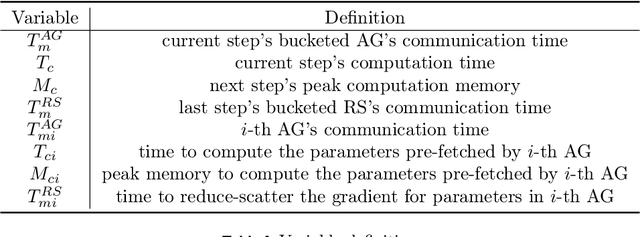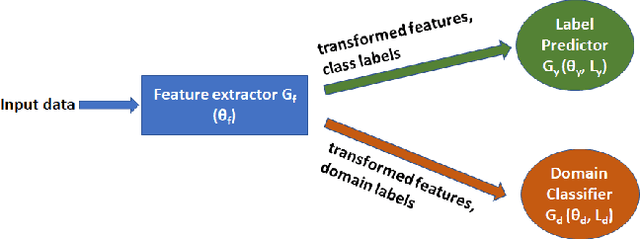Andrew Gu
Jack
GaLore 2: Large-Scale LLM Pre-Training by Gradient Low-Rank Projection
Apr 29, 2025



Abstract:Large language models (LLMs) have revolutionized natural language understanding and generation but face significant memory bottlenecks during training. GaLore, Gradient Low-Rank Projection, addresses this issue by leveraging the inherent low-rank structure of weight gradients, enabling substantial memory savings without sacrificing performance. Recent works further extend GaLore from various aspects, including low-bit quantization and higher-order tensor structures. However, there are several remaining challenges for GaLore, such as the computational overhead of SVD for subspace updates and the integration with state-of-the-art training parallelization strategies (e.g., FSDP). In this paper, we present GaLore 2, an efficient and scalable GaLore framework that addresses these challenges and incorporates recent advancements. In addition, we demonstrate the scalability of GaLore 2 by pre-training Llama 7B from scratch using up to 500 billion training tokens, highlighting its potential impact on real LLM pre-training scenarios.
SimpleFSDP: Simpler Fully Sharded Data Parallel with torch.compile
Nov 01, 2024



Abstract:Distributed training of large models consumes enormous computation resources and requires substantial engineering efforts to compose various training techniques. This paper presents SimpleFSDP, a PyTorch-native compiler-based Fully Sharded Data Parallel (FSDP) framework, which has a simple implementation for maintenance and composability, allows full computation-communication graph tracing, and brings performance enhancement via compiler backend optimizations. SimpleFSDP's novelty lies in its unique torch.compile-friendly implementation of collective communications using existing PyTorch primitives, namely parametrizations, selective activation checkpointing, and DTensor. It also features the first-of-its-kind intermediate representation (IR) nodes bucketing and reordering in the TorchInductor backend for effective computation-communication overlapping. As a result, users can employ the aforementioned optimizations to automatically or manually wrap model components for minimal communication exposure. Extensive evaluations of SimpleFSDP on Llama 3 models (including the ultra-large 405B) using TorchTitan demonstrate up to 28.54% memory reduction and 68.67% throughput improvement compared to the most widely adopted FSDP2 eager framework, when composed with other distributed training techniques.
TorchTitan: One-stop PyTorch native solution for production ready LLM pre-training
Oct 09, 2024Abstract:The development of large language models (LLMs) has been instrumental in advancing state-of-the-art natural language processing applications. Training LLMs with billions of parameters and trillions of tokens require sophisticated distributed systems that enable composing and comparing several state-of-the-art techniques in order to efficiently scale across thousands of accelerators. However, existing solutions are complex, scattered across multiple libraries/repositories, lack interoperability, and are cumbersome to maintain. Thus, curating and empirically comparing training recipes require non-trivial engineering effort. This paper introduces TorchTitan, an open-source, PyTorch-native distributed training system that unifies state-of-the-art techniques, streamlining integration and reducing overhead. TorchTitan enables 3D parallelism in a modular manner with elastic scaling, providing comprehensive logging, checkpointing, and debugging tools for production-ready training. It also incorporates hardware-software co-designed solutions, leveraging features like Float8 training and SymmetricMemory. As a flexible test bed, TorchTitan facilitates custom recipe curation and comparison, allowing us to develop optimized training recipes for Llama 3.1 and provide guidance on selecting techniques for maximum efficiency based on our experiences. We thoroughly assess TorchTitan on the Llama 3.1 family of LLMs, spanning 8 billion to 405 billion parameters, and showcase its exceptional performance, modular composability, and elastic scalability. By stacking training optimizations, we demonstrate accelerations of 65.08% with 1D parallelism at the 128-GPU scale (Llama 3.1 8B), an additional 12.59% with 2D parallelism at the 256-GPU scale (Llama 3.1 70B), and an additional 30% with 3D parallelism at the 512-GPU scale (Llama 3.1 405B) on NVIDIA H100 GPUs over optimized baselines.
The Llama 3 Herd of Models
Jul 31, 2024Abstract:Modern artificial intelligence (AI) systems are powered by foundation models. This paper presents a new set of foundation models, called Llama 3. It is a herd of language models that natively support multilinguality, coding, reasoning, and tool usage. Our largest model is a dense Transformer with 405B parameters and a context window of up to 128K tokens. This paper presents an extensive empirical evaluation of Llama 3. We find that Llama 3 delivers comparable quality to leading language models such as GPT-4 on a plethora of tasks. We publicly release Llama 3, including pre-trained and post-trained versions of the 405B parameter language model and our Llama Guard 3 model for input and output safety. The paper also presents the results of experiments in which we integrate image, video, and speech capabilities into Llama 3 via a compositional approach. We observe this approach performs competitively with the state-of-the-art on image, video, and speech recognition tasks. The resulting models are not yet being broadly released as they are still under development.
PyTorch FSDP: Experiences on Scaling Fully Sharded Data Parallel
Apr 21, 2023Abstract:It is widely acknowledged that large models have the potential to deliver superior performance across a broad range of domains. Despite the remarkable progress made in the field of machine learning systems research, which has enabled the development and exploration of large models, such abilities remain confined to a small group of advanced users and industry leaders, resulting in an implicit technical barrier for the wider community to access and leverage these technologies. In this paper, we introduce PyTorch Fully Sharded Data Parallel (FSDP) as an industry-grade solution for large model training. FSDP has been closely co-designed with several key PyTorch core components including Tensor implementation, dispatcher system, and CUDA memory caching allocator, to provide non-intrusive user experiences and high training efficiency. Additionally, FSDP natively incorporates a range of techniques and settings to optimize resource utilization across a variety of hardware configurations. The experimental results demonstrate that FSDP is capable of achieving comparable performance to Distributed Data Parallel while providing support for significantly larger models with near-linear scalability in terms of TFLOPS.
Deep Transfer Learning for Infectious Disease Case Detection Using Electronic Medical Records
Mar 08, 2021



Abstract:During an infectious disease pandemic, it is critical to share electronic medical records or models (learned from these records) across regions. Applying one region's data/model to another region often have distribution shift issues that violate the assumptions of traditional machine learning techniques. Transfer learning can be a solution. To explore the potential of deep transfer learning algorithms, we applied two data-based algorithms (domain adversarial neural networks and maximum classifier discrepancy) and model-based transfer learning algorithms to infectious disease detection tasks. We further studied well-defined synthetic scenarios where the data distribution differences between two regions are known. Our experiments show that, in the context of infectious disease classification, transfer learning may be useful when (1) the source and target are similar and the target training data is insufficient and (2) the target training data does not have labels. Model-based transfer learning works well in the first situation, in which case the performance closely matched that of the data-based transfer learning models. Still, further investigation of the domain shift in real world research data to account for the drop in performance is needed.
 Add to Chrome
Add to Chrome Add to Firefox
Add to Firefox Add to Edge
Add to Edge